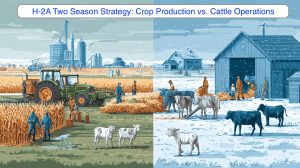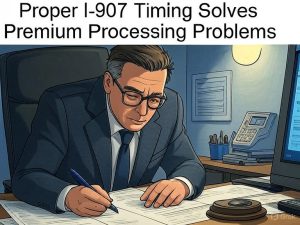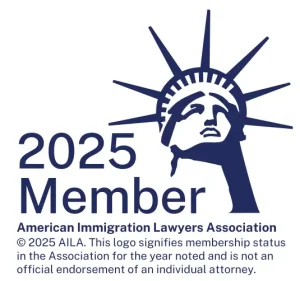When people hear the term “work visa,” they usually think of H-1B, L-1, or EB-3. But what about the EB-4 visa? Most immigrants, employers, and even attorneys do not mention it often. That is because the EB-4 feels more like a legal ghost. It exists on paper, but for many, it is invisible in practice. Understanding whether the EB-4 applies to you could save months of pursuing the wrong immigration path—or reveal an overlooked opportunity. So, what exactly is the EB-4 visa, and why does it seem like almost no one qualifies for it?
What Is the EB-4 Visa?
The EB-4 is an employment-based immigrant visa reserved for a group of individuals known as “special immigrants.” It belongs to the fourth preference category of permanent work visas. Unlike other work visas, the EB-4 does not typically require a job offer in the traditional sense. Instead, it is meant for highly specific groups such as:
- Religious workers, including ministers and monks
- Special Immigrant Juveniles (SIJs), often minors who have been abused or abandoned
- Broadcasters employed by the U.S. Agency for Global Media
- Employees or former employees of international organizations
- Certain Iraqi and Afghan nationals who assisted the U.S. government
- Retired NATO staff, armed forces members, and other rare classifications
Why Most People Have Not Heard of It
This visa is not widely known because it serves very narrow purposes. You cannot apply simply because you want to live or work in the United States. You must fall into one of the specific available legal categories. Even many immigration attorneys rarely encounter EB-4 cases unless they work in religious, humanitarian, or government-related fields.
Due to its limited scope, the EB-4 lacks public awareness. Many eligible individuals do not know it exists, and there is little outreach or official promotion. This makes the visa feel unreal or inaccessible.
Who Actually Qualifies?
The EB-4 visa remains active, but not all subcategories are currently open. For example, the non-minister religious worker category depends on Congressional extensions and has lapsed. Religious workers once represented the most accessible EB-4 pathway, but eligibility now depends on whether you qualify as a minister under the narrower current definition. Non-minister religious workers face additional uncertainty due to the lapsed Congressional authorization, leaving many religious organizations and workers in limbo.
Afghan and Iraqi programs also have limited visa slots. Qualifying usually involves filing Form I-360, followed by either adjustment of status or consular processing.
The Hidden Obstacles
Even for those who meet the criteria, the process is far from simple. Applicants often face:
- Long wait times and unpredictable visa availability
- Visa Bulletin backlogs, especially for Central American countries
- Slow processing with no access to premium services
- Legal complexity in proving eligibility
These factors create delays and discourage many from completing the process.
Is the EB-4 Visa Even Real?
Yes, the EB-4 is real. However, it is not designed for the general public. It serves a narrow legal function for specific humanitarian or institutional needs. For most work visa seekers, it is not a realistic path.
How the EB-4 Process Works with USCIS
Applying for the EB-4 visa typically begins with Form I-360, the Petition for Amerasian, Widow(er), or Special Immigrant. In most cases, this form is filed with U.S. Citizenship and Immigration Services (USCIS) by either the applicant or a sponsoring organization, depending on the subcategory. For example, religious organizations usually file on behalf of the beneficiary, while Special Immigrant Juveniles often work with state agencies or attorneys.
Once Form I-360 is submitted, USCIS reviews the petition and supporting evidence. If approved, the case either proceeds to adjustment of status (if the person is lawfully present in the U.S.) or to consular processing through a U.S. embassy abroad. At this stage, the applicant waits for their priority date to become current on the Visa Bulletin, which determines visa availability under the EB-4 category.
If a visa is available and the petitioner is in the U.S., they can file Form I-485 to adjust their status to lawful permanent resident. If abroad, they must complete the process through the National Visa Center and attend a visa interview in their home country.
The entire process is often slow and complex, with some subcategories facing long delays due to annual caps and regional backlogs. Additionally, premium processing is not available for EB-4 petitions, so timelines can vary significantly.
Conclusion: What You Should Know Before Applying
The EB-4 visa is a valid but limited option. If you believe you may qualify, speak to an experienced immigration professional. For most people, other work visa categories like EB-2 or EB-3 are more accessible. The EB-4 serves a specific purpose in immigration law—and if you fall outside its narrow categories, knowing that now saves you from pursuing an impossible path.
At Immigration Law of Montana, P.C., we help applicants understand their options, prepare accurate petitions, and avoid costly mistakes when dealing with USCIS and the Department of State. Schedule a consultation today and take the next step toward a successful and lawful immigration journey.








